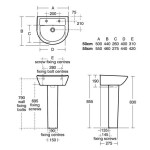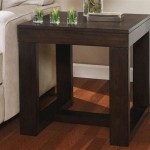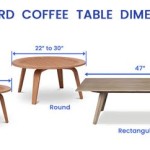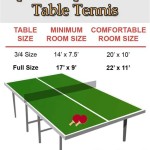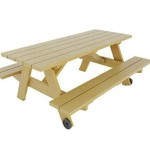Standard Ping Pong Table Size: A Comprehensive Guide
The game of ping pong, also known as table tennis, enjoys widespread popularity as a recreational and competitive sport. Ubiquitous in homes, schools, community centers, and professional arenas, the game requires specific equipment, including paddles, balls, and, most importantly, a table of standardized dimensions. Adherence to these standards ensures fair play and consistent gameplay across different environments and skill levels. This article delves into the precise measurements and specifications of a standard ping pong table, explaining the reasons behind these dimensions and their impact on the game.
The International Table Tennis Federation (ITTF) governs the rules and regulations of table tennis, including the specifications for the playing surface. These guidelines are designed to maintain uniformity and ensure that the game is played under consistent conditions worldwide. The ITTF standards dictate the dimensions, material, height, and net requirements for a regulation ping pong table.
Key Point 1: Precise Dimensions of a Standard Ping Pong Table
The official dimensions of a standard ping pong table are meticulously defined by the ITTF. Accuracy and adherence to these specifications are critical for both casual and professional play. Deviations from these standards can significantly alter the dynamics of the game, affecting ball bounce, player positioning, and overall gameplay strategy.
The length of a standard ping pong table is 274 centimeters (9 feet). This length provides ample space for players to maneuver and execute a variety of shots, from defensive chops to aggressive forehand drives. The length is carefully calibrated to allow for a balanced interplay between offense and defense.
The width of a standard ping pong table is 152.5 centimeters (5 feet). This width, narrower than the length, encourages strategic shot placement and angled attacks. It also demands precise reflexes and quick footwork from players, as they must cover the table effectively to return shots from various angles.
The height of the table surface is 76 centimeters (30 inches) from the floor. This height is designed to be ergonomically suitable for most players, allowing them to maintain a comfortable stance and react quickly to incoming shots. The standardized height promotes consistent ball bounce and predictable gameplay.
These dimensions are not arbitrary; they have evolved over time to optimize the game's pace, strategy, and physical demands. The 9-foot length allows for sufficient rallies and shot variety, while the 5-foot width promotes tactical play and angles. The 30-inch height ensures consistent ball bounce and comfortable player posture. The combination of these dimensions creates a dynamic and engaging playing experience.
Key Point 2: Material and Surface Characteristics
Beyond the dimensions, the material and surface characteristics of a ping pong table are equally important. The ITTF specifies that the table surface must be made of a solid material, typically wood or a wood composite, and must provide a uniform and consistent bounce of the ball.
The primary requirement for the surface material is that it allows a standard ping pong ball, when dropped from a height of 30 centimeters (approximately 11.8 inches), to bounce to a height of approximately 23 centimeters (approximately 9 inches). This bounce requirement ensures that the ball reacts predictably to the surface, regardless of the table's location or manufacturer.
The surface of the table must also be uniformly dark colored, usually green or blue, and matte to avoid glare. This dark, non-reflective surface allows players to track the ball easily and accurately, even under bright lighting conditions. The matte finish prevents distracting reflections that could interfere with visual tracking.
The table surface is typically coated with multiple layers of paint or varnish to enhance its durability and playing characteristics. These coatings provide a smooth, consistent surface that facilitates accurate ball bounce and spin. The quality of the surface finish directly impacts the game's playability and the longevity of the table.
Around the perimeter of the table, a white line, 2 centimeters (approximately 0.8 inches) wide, marks the edges of the playing surface. These lines clearly define the boundaries of the playing area and aid in judging whether a ball is in or out of bounds. These lines are an integral part of the table's design and contribute to fair gameplay.
Key Point 3: The Net Assembly
The net assembly is another crucial component of a standard ping pong table. It divides the playing surface into two equal halves and must adhere to specific dimensions and specifications outlined by the ITTF. The net assembly consists of the net itself, the supporting posts, and the clamps that attach the assembly to the table.
The net must be 15.25 centimeters (6 inches) high. This height is precisely calibrated to provide a challenging obstacle for players, requiring them to execute shots with sufficient lift to clear the net while maintaining accuracy and spin. The net height influences the trajectory and difficulty of various shots.
The net must extend across the entire width of the table, dividing it into two equal playing areas. The net should be suspended by a cord attached to the posts, and the tension of the cord should be adjusted to ensure that the net remains taut and level. A sagging or uneven net can disrupt the flow of the game and create unfair advantages or disadvantages.
The posts supporting the net should be placed 15.25 centimeters (6 inches) outside the sidelines of the table. This placement ensures that the posts do not interfere with gameplay and that players have ample space to execute shots along the edges of the table. The posts are typically made of metal or plastic and should be sturdy enough to support the net without wobbling or shifting.
The net assembly must be designed to attach securely to the table, preventing movement or displacement during gameplay. Clamps or other fastening mechanisms are used to hold the posts firmly in place. The stability of the net assembly is essential for maintaining fair and consistent playing conditions.
Furthermore, when playing doubles, a center line, 3mm wide, must run down the center of the table, parallel to the sidelines. This line is used to demarcate the service areas for each player, ensuring that serves are delivered diagonally across the table.
In summary, the standard ping pong table size and specifications are critical for ensuring fair play and consistent gameplay. The dimensions, material, surface characteristics, and net assembly are all carefully designed to optimize the game's dynamics and provide a challenging and engaging experience for players of all skill levels. Adherence to these standards promotes uniformity across different playing environments and contributes to the overall integrity of the sport. Understanding these specifications is therefore essential for anyone involved in playing, teaching, or organizing table tennis events.

Table Tennis Measurements Size And Dimensions Cornilleau

Table Tennis Dlgsc

To Choose The Right Table Tennis Size For You Stiga Sports

To Choose The Right Table Tennis Size For You Stiga Sports

Official Table Tennis Size And Dimensions Aussie

Table Tennis Room Size Court And Dimensions

Ping Pong Table Dimensions Diy Outdoor

To Choose The Right Table Tennis Size For You Stiga Sports
Table Tennis Tables Dimensions Drawings Com

How Much Space Do You Need For A Table Tennis Heemskerk Play It


